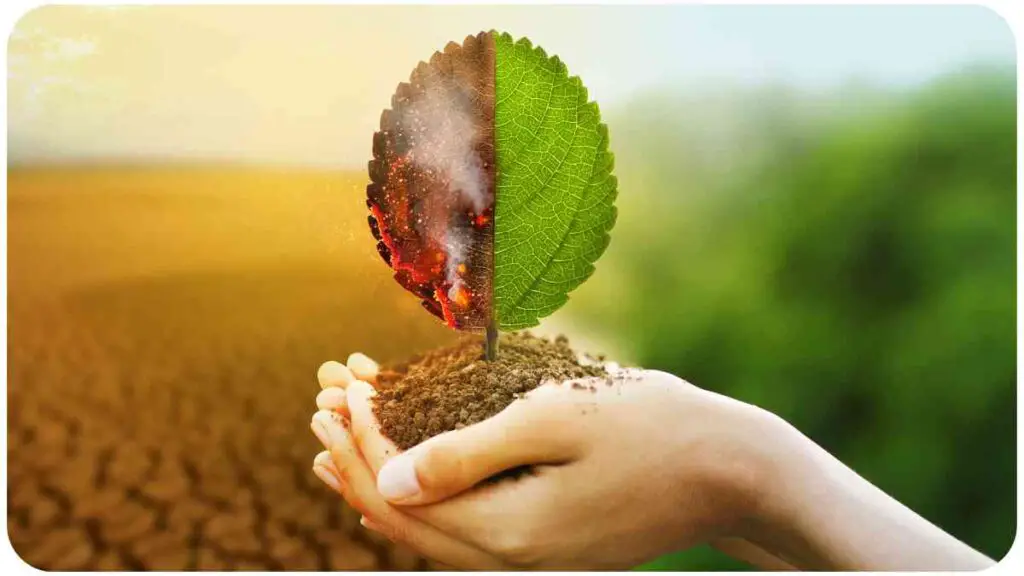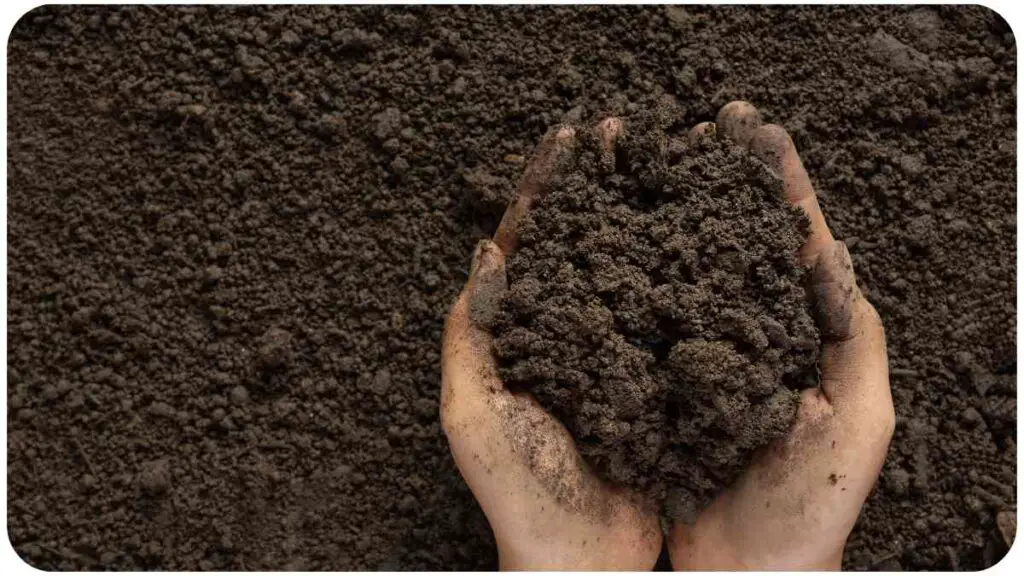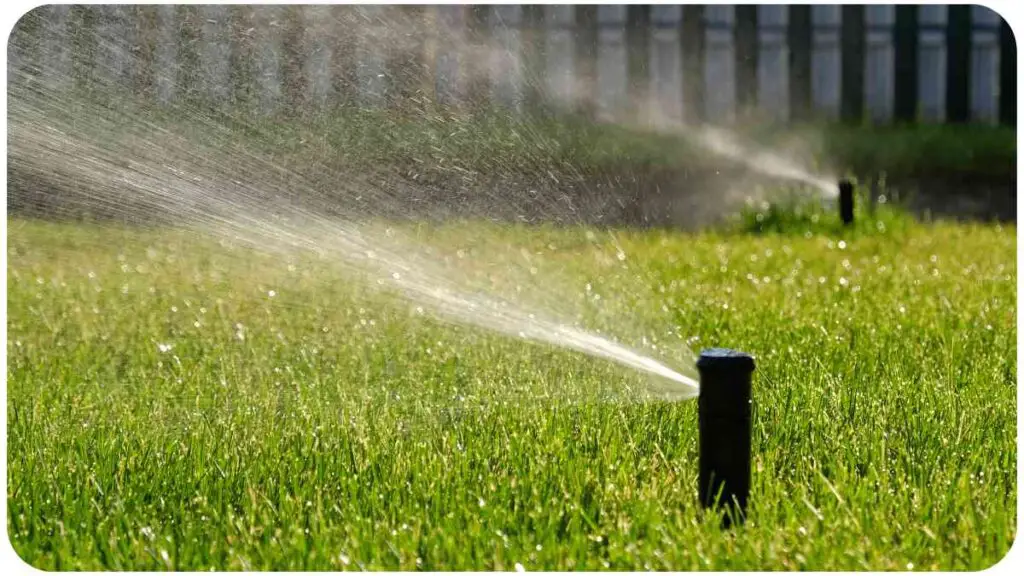Welcome to the world of drought-busting gardens, where sustainability meets beauty and functionality! In this comprehensive guide, we’ll delve into the art and science of water-wise planting methods, empowering you to create lush, thriving landscapes while conserving precious water resources.
Drought conditions are becoming increasingly prevalent in many parts of the world, posing significant challenges for gardeners and landscapers. However, with the right knowledge and techniques, you can transform your outdoor space into a resilient oasis that flourishes even in the face of water scarcity.
Whether you’re a seasoned gardener looking to revamp your landscape or a novice eager to cultivate your green thumb, this article will provide you with invaluable insights, practical tips, and real-world examples to help you master the art of drought-resistant gardening. Let’s embark on this journey together and discover the secrets to creating vibrant, sustainable gardens that thrive year-round.
| Takeaways |
|---|
| 1. Embrace water-wise gardening practices. |
| 2. Select drought-tolerant plants. |
| 3. Improve soil health and moisture retention. |
| 4. Implement efficient irrigation techniques. |
| 5. Consider rainwater harvesting for water conservation. |
| 6. Practice sustainable gardening for long-term resilience. |
Understanding Drought and Its Impact

Before diving into the specifics of water-wise planting, it’s essential to understand the nature of drought and how it affects plants and ecosystems. Drought is not simply a lack of rainfall; it’s a complex phenomenon characterized by prolonged periods of abnormally low precipitation, resulting in water shortages and environmental stress.
During drought conditions, plants face increased competition for water, leading to reduced growth, wilting, and even death in severe cases. Additionally, dry soil conditions can impact soil fertility and microbial activity, further exacerbating the challenges for plant survival.
Benefits of Water-Wise Planting
Water-wise planting goes beyond mere survival; it’s about creating resilient landscapes that thrive with minimal water input. By adopting water-wise practices, gardeners can enjoy a myriad of benefits, including:
- Reduced water consumption: Drought-tolerant plants require less irrigation, helping to conserve water resources and lower utility bills.
- Increased resilience: Water-wise landscapes are better equipped to withstand drought conditions and other environmental stressors, ensuring long-term sustainability.
- Lower maintenance: Once established, drought-resistant gardens typically require less maintenance, saving time and effort for gardeners.
- Enhanced biodiversity: Native and drought-tolerant plants attract a diverse array of wildlife, including birds, butterflies, and beneficial insects, promoting ecological balance.
Transform your patio into a personal oasis, bringing Natures serenity to your doorstep. Create a tranquil retreat amidst nature’s beauty, perfect for relaxation and unwinding after a long day.
Selecting the Right Plants for Your Drought-Busting Garden
Central to the success of a water-wise garden is the careful selection of drought-tolerant plants that can thrive in your specific climate and soil conditions. When choosing plants for your landscape, consider factors such as:
- Climate suitability: Select plants that are well-adapted to your region’s climate, taking into account temperature extremes, rainfall patterns, and seasonal variations.
- Water requirements: Choose plants with low to moderate water needs, prioritizing species that can survive with minimal irrigation once established.
- Soil compatibility: Assess your soil type and pH levels to ensure compatibility with your chosen plants. Amend soil as needed to improve drainage and fertility.
- Aesthetic appeal: Balance functionality with aesthetics by selecting plants that offer visual interest, texture, and seasonal color variation.
To assist you in selecting the right plants for your drought-busting garden, refer to the following table showcasing a variety of drought-tolerant options suitable for different climates and growing conditions:
| Plant Name | Water Requirements | Sun Exposure | Soil Type | Bloom Season | Mature Height |
|---|---|---|---|---|---|
| Lavender | Low | Full sun | Well-drained | Summer | 1-3 feet |
| Succulents | Very low | Full sun | Sandy | Year-round | Varies |
| Yarrow | Low | Full sun | Loamy | Spring | 1-3 feet |
| Agave | Very low | Full sun | Sandy | Year-round | Varies |
| Russian Sage | Low | Full sun | Well-drained | Summer | 3-5 feet |
| Penstemon | Low | Full sun | Sandy | Spring | 2-3 feet |
| Blue Fescue | Very low | Full sun | Well-drained | Summer | 6-12 inches |
| Butterfly Bush | Low | Full sun | Loamy | Summer | 3-6 feet |
By incorporating a diverse selection of drought-tolerant plants into your landscape design, you can create a visually stunning garden that thrives with minimal water input. Experiment with different combinations of colors, textures, and heights to achieve a dynamic and harmonious composition that evolves throughout the seasons.
Escape the urban hustle and bustle, backyard sanctuaries await. Discover serene spaces designed for rejuvenation, where nature’s embrace soothes the soul and calms the mind.
Soil Preparation Techniques for Water Conservation

Healthy soil is the foundation of a thriving garden, especially in drought-prone regions where water retention is crucial. By implementing soil preparation techniques that enhance moisture retention and promote root health, you can create an optimal growing environment for your plants.
Importance of Soil Preparation
Before planting, it’s essential to assess and prepare your soil to ensure it can adequately support plant growth and withstand drought conditions. Healthy soil not only provides essential nutrients and support for plant roots but also plays a vital role in regulating water infiltration and retention.
Efficient Irrigation Strategies

While proper plant selection and soil preparation are essential components of water-wise gardening, efficient irrigation strategies are equally critical for maximizing water conservation and promoting plant health. By utilizing water-efficient irrigation methods and scheduling techniques, you can minimize water waste and optimize water uptake by your plants.
Comparison of Irrigation Methods
When it comes to irrigating your garden, not all methods are created equal. Each irrigation technique has its advantages and limitations, depending on factors such as water availability, soil type, and plant needs. To help you determine the most suitable irrigation method for your garden, let’s compare the pros and cons of common options:
For busy urbanites, low-maintenance gardens offer green respite. Embrace sustainable practices and enjoy thriving greenery without the constant upkeep, perfect for modern lifestyles.
| Irrigation Method | Pros | Cons |
|---|---|---|
| Drip Irrigation | – Delivers water directly to the root zone, minimizing evaporation and runoff. <br> – Allows for precise control of water delivery, reducing water waste. | – Initial installation costs may be higher than other methods. <br> – Requires regular maintenance to prevent clogging. |
| Soaker Hoses | – Provides gradual, uniform watering to the root zone, promoting deep root growth. | – Limited coverage area may require multiple hoses for larger gardens. <br> – Susceptible to clogging and damage. |
| Sprinkler Systems | – Suitable for large areas and overhead coverage. <br> – Can be automated for convenience. | – Prone to water loss due to evaporation and wind drift. <br> – Not as water-efficient as drip or soaker systems. |
| Rainwater Harvesting | – Captures and stores rainwater for later use, reducing reliance on municipal water sources. <br> – Environmentally friendly and sustainable. | – Requires upfront investment in collection systems and storage tanks. <br> – Limited by rainfall frequency and volume. |
By carefully considering your garden’s size, layout, and water requirements, you can select the most appropriate irrigation method or combination of methods to optimize water efficiency and promote plant health.
Mulching for Moisture Retention
Mulching is a simple yet effective technique for conserving soil moisture, suppressing weed growth, and moderating soil temperature. By applying a layer of organic or inorganic mulch around your plants, you can create a protective barrier that reduces water evaporation from the soil surface and minimizes moisture stress on your plants’ roots.
Benefits of Mulching
Mulching offers a multitude of benefits for water-wise gardening, including:
- Water conservation: Mulch acts as a protective layer, reducing water evaporation from the soil surface and maintaining soil moisture levels.
- Weed suppression: Mulch inhibits weed growth by blocking sunlight and preventing weed seeds from germinating, reducing competition for water and nutrients.
- Soil insulation: Mulch helps regulate soil temperature, keeping it cooler in hot weather and warmer in cold weather, which promotes healthy root development.
- Erosion control: Mulch helps prevent soil erosion caused by wind and water runoff, preserving soil structure and fertility.
Rainwater Harvesting Systems
Harnessing the power of rainwater is a sustainable and eco-friendly way to supplement your garden’s water supply and reduce reliance on municipal sources. Rainwater harvesting systems collect and store rainwater from rooftops, driveways, and other surfaces, allowing you to utilize this free and abundant resource for watering your plants.
Combat pests sustainably, organic pest control is the answer. Employ eco-friendly strategies to protect your garden while preserving the natural balance of the ecosystem.
Types of Rainwater Harvesting Systems
There are several types of rainwater harvesting systems available, ranging from simple rain barrels to more elaborate cisterns and underground storage tanks. Each system has its advantages and considerations, depending on factors such as available space, budget, and local regulations. Here are some common types of rainwater harvesting systems:
- Rain Barrels: Rain barrels are simple, cost-effective containers that collect and store rainwater from downspouts for later use in the garden. They are easy to install and suitable for homeowners with limited space and budget constraints.
- Above-Ground Tanks: Above-ground tanks are larger storage containers typically placed near the home or garden. They come in various sizes and materials, including plastic, fiberglass, and metal, offering greater storage capacity than rain barrels.
- Underground Cisterns: Underground cisterns are buried beneath the ground and connected to rooftop gutters or drainage systems. They provide ample storage capacity while remaining hidden from view, making them ideal for homeowners with aesthetic concerns.
Incorporating Native Plants into Your Landscape
Native plants are indigenous species that have evolved to thrive in specific regions and climates without the need for excessive water, fertilizer, or pesticides. By incorporating native plants into your landscape design, you can create resilient and biodiverse ecosystems that require minimal maintenance and support local wildlife populations.
Benefits of Native Plants
Native plants offer numerous benefits for water-wise gardening and ecological restoration, including:
- Water efficiency: Native plants are well-adapted to local climate and soil conditions, requiring minimal supplemental watering once established.
- Wildlife habitat: Native plants provide essential food and shelter for native wildlife species, including birds, butterflies, and pollinators, enhancing biodiversity and ecological balance.
- Ecosystem services: Native plants help improve soil health, filter stormwater runoff, and mitigate erosion, contributing to overall ecosystem resilience and sustainability.
To assist you in selecting native plants for your region, refer to the following table showcasing a variety of native species suitable for different climate zones:
| Region | Native Plant Species | Habitat | Bloom Season | Mature Height |
|---|---|---|---|---|
| Southwest | Desert Marigold (Baileya multiradiata) | Arid | Spring | 1-2 feet |
| Midwest | Purple Coneflower (Echinacea purpurea) | Prairies | Summer | 2-3 feet |
| Pacific Coast | California Poppy (Eschscholzia californica) | Coastal | Spring | 1-2 feet |
| Southeast | Southern Magnolia (Magnolia grandiflora) | Woodlands | Summer | 60-80 feet |
| Northeast | Eastern Redbud (Cercis canadensis) | Forests | Spring | 20-30 feet |
| Rocky Mountains | Rocky Mountain Columbine (Aquilegia coerulea) | Alpine Meadows | Summer | 1-3 feet |
By incorporating a diverse selection of native plants into your landscape design, you can create vibrant and resilient ecosystems that celebrate the unique beauty and biodiversity of your region.
Designing a Low-Water-Use Landscape
Designing a low-water-use landscape is a creative and rewarding process that involves careful planning, thoughtful plant selection, and strategic placement of hardscape elements. By adopting water-efficient design principles and incorporating sustainable landscaping practices, you can create beautiful outdoor spaces that require minimal water input and maintenance.
Unlock the secrets of plant nutrition, nourish your garden naturally. Understand the essentials of feeding your plants for optimal growth, using organic methods for healthy and vibrant greenery.
Principles of Water-Efficient Design
When designing a low-water-use landscape, consider the following principles to maximize water efficiency and aesthetic appeal:
- Xeriscaping: Xeriscaping is a landscaping approach that emphasizes water conservation through the use of drought-tolerant plants, efficient irrigation, and mulching. By incorporating xeriscaping principles into your design, you can create visually stunning landscapes that thrive with minimal water input.
- Grouping Plants by Water Needs: Grouping plants with similar water requirements together allows for more efficient irrigation and ensures that each plant receives the appropriate amount of water. Consider dividing your landscape into hydrozones based on water availability and plant needs.
- Functional Hardscapes: Incorporate functional hardscape elements such as patios, pathways, and retaining walls to reduce the overall area of irrigated plantings. By maximizing non-plant areas in your landscape, you can minimize water usage while creating defined outdoor living spaces.
- Rain Garden Design: Incorporating rain gardens into your landscape design helps capture and infiltrate stormwater runoff, reducing the need for irrigation and mitigating erosion. Select native plants and porous materials for rain garden construction to enhance water infiltration and support local biodiversity.
- Permeable Surfaces: Use permeable materials such as gravel, permeable pavers, or decomposed granite for pathways and driveways to allow rainwater to infiltrate the soil instead of running off into storm drains. Permeable surfaces help recharge groundwater and reduce runoff pollution.
Practical Tips for Maintaining a Drought-Resilient Garden
Maintaining a drought-resilient garden requires ongoing care and attention to ensure that your plants remain healthy and vibrant, even during periods of water scarcity. By following these practical tips, you can maximize the effectiveness of your water-wise garden and minimize water waste:
Efficient Watering Practices
- Water deeply and infrequently: Encourage deep root growth by watering plants deeply but less frequently. This promotes drought tolerance and reduces water loss through evaporation.
- Water in the morning: Watering early in the morning reduces evaporation and allows plants to absorb moisture before the heat of the day.
- Use a drip irrigation system: Install a drip irrigation system to deliver water directly to the root zone, minimizing waste and maximizing efficiency.
Soil Management Techniques
- Monitor soil moisture: Regularly check soil moisture levels using a moisture meter or by simply digging a small hole in the soil. Water only when necessary to avoid overwatering.
- Apply mulch: Maintain a layer of mulch around plants to conserve soil moisture, suppress weeds, and regulate soil temperature.
Plant Care and Maintenance
- Prune judiciously: Prune plants selectively to remove dead or diseased branches and promote healthy growth. Avoid excessive pruning, as it can stress plants and increase water demand.
- Monitor for pests and diseases: Keep an eye out for signs of pest infestations or disease outbreaks and take appropriate measures to control them promptly.
Sustainable Gardening Practices
- Compost organic matter: Use compost to improve soil fertility and structure, increasing its water-holding capacity and reducing the need for supplemental fertilizers.
- Practice smart lawn care: If you have a lawn, mow it at the highest recommended height to promote deep root growth and reduce water loss through evaporation. Consider replacing traditional turfgrass with drought-tolerant alternatives or converting some lawn areas to native plantings.
By implementing these practical tips and adopting a proactive approach to garden maintenance, you can ensure that your drought-resilient garden remains healthy, vibrant, and sustainable for years to come.
Overcoming Common Challenges
While water-wise gardening offers numerous benefits, it’s not without its challenges. From unpredictable weather patterns to pest infestations, gardeners may encounter various obstacles along the way. However, with proper planning and resilience, these challenges can be overcome, allowing you to create thriving landscapes that endure.
Weather Variability
One of the biggest challenges of water-wise gardening is coping with unpredictable weather patterns, including droughts, heatwaves, and heavy rainfall events. To mitigate the impact of weather variability, consider implementing the following strategies:
- Install a weather-based irrigation controller: Use smart irrigation technology that adjusts watering schedules based on real-time weather data to optimize water efficiency and minimize runoff.
- Invest in rainwater harvesting: Capture and store rainwater for later use during dry periods, reducing reliance on municipal water sources and mitigating the impact of drought.
Pest and Disease Management
Pests and diseases can pose significant threats to the health and vitality of your garden, especially during periods of stress such as drought. To prevent and manage pest and disease outbreaks, consider the following tactics:
- Practice crop rotation: Rotate plantings to prevent the buildup of pests and diseases in the soil, promoting overall garden health and resilience.
- Implement integrated pest management (IPM) techniques: Use a combination of cultural, biological, and chemical control methods to manage pests and diseases while minimizing environmental impact.
Soil Health and Fertility
Maintaining soil health and fertility is essential for supporting healthy plant growth and resilience in water-wise gardens. To enhance soil quality and fertility, consider the following strategies:
- Amend soil with organic matter: Incorporate compost, aged manure, or other organic amendments into the soil to improve structure, water retention, and nutrient availability.
- Practice minimal tillage: Minimize soil disturbance to preserve soil structure and microbial activity, promoting long-term soil health and fertility.
By proactively addressing these common challenges and implementing appropriate strategies, you can overcome obstacles and cultivate thriving, resilient landscapes that endure and adapt to changing environmental conditions.
Success Stories: Real-Life Examples of Drought-Busting Gardens
To inspire and motivate aspiring water-wise gardeners, let’s explore some real-life success stories of individuals and communities who have embraced sustainable gardening practices and created thriving drought-busting gardens:
The Dry Gardening Experience of Maria Hernandez
Maria Hernandez, a passionate gardener from Southern California, transformed her water-intensive lawn into a vibrant and drought-tolerant oasis using a combination of native plants, efficient irrigation, and mulching techniques. By embracing xeriscaping principles and selecting drought-tolerant plant species adapted to her region’s climate, Maria reduced her water consumption by over 50% while creating a visually stunning and environmentally sustainable landscape.
The Community Garden Project in Arizona
In Arizona, a group of dedicated volunteers collaborated to establish a community garden project aimed at promoting water-wise gardening practices and food sovereignty in their local community. Through hands-on workshops, educational outreach, and collaborative gardening efforts, the project successfully demonstrated the feasibility and benefits of drought-resistant gardening while fostering community engagement and resilience.
These success stories serve as inspiring examples of how individuals and communities can make a positive impact by embracing water-wise gardening practices and creating resilient landscapes that thrive in harmony with nature.
Conclusion
In conclusion, creating a drought-busting garden is not just about conserving water it’s about embracing sustainability, fostering biodiversity, and cultivating resilience in the face of environmental challenges.
By incorporating water-wise planting methods, efficient irrigation techniques, and sustainable landscaping practices, you can create beautiful and resilient outdoor spaces that thrive year-round while minimizing water consumption and environmental impact.
Additional Resources for Water-Wise Gardening
To further support your journey towards creating a drought-busting garden, here are some additional resources and tools to explore:
- Local Cooperative Extension Offices: Contact your local cooperative extension office or master gardener program for region-specific gardening advice, workshops, and resources tailored to your climate and growing conditions.
- Online Gardening Communities: Join online gardening forums, social media groups, and community websites to connect with fellow gardeners, share tips and experiences, and seek advice on water-wise gardening practices.
- Books and Publications: Explore a wide range of books, magazines, and online publications dedicated to water-wise gardening, sustainable landscaping, and ecological restoration. Look for titles by renowned experts such as Doug Tallamy, Piet Oudolf, and Lauren Springer Ogden.
- Gardening Workshops and Webinars: Attend gardening workshops, webinars, and educational events hosted by local botanical gardens, nurseries, and environmental organizations. These events offer valuable insights, hands-on demonstrations, and networking opportunities with gardening enthusiasts and experts.
- Gardening Apps and Tools: Explore gardening apps and online tools designed to assist with plant selection, garden planning, irrigation scheduling, and pest management. From interactive plant databases to water-saving calculators, these resources can help streamline your gardening efforts and maximize efficiency.
Further Reading
- Drought-Busting Techniques by Bonnie Plants: Explore a comprehensive guide to drought-busting techniques, including plant selection, soil preparation, and water-wise gardening practices.
- Water-Wise Gardening: Conserving and Irrigating Responsibly by Garden Professors: Learn about water-wise gardening principles and strategies for conserving water and irrigating responsibly in your garden.
- Drought-Proof Your Garden by Trees South Africa: Discover practical tips and techniques for drought-proofing your garden, including plant selection, soil management, and water-saving strategies.
FAQs
What are the key principles of water-wise gardening?
Water-wise gardening emphasizes conservation, efficiency, and sustainability. By selecting drought-tolerant plants, improving soil health, and implementing efficient irrigation methods, gardeners can minimize water usage while promoting healthy, resilient landscapes.
How can I select the right plants for a drought-resistant garden?
When choosing plants for a drought-resistant garden, consider factors such as water requirements, climate suitability, and soil compatibility. Opt for native and drought-tolerant species that are well-adapted to your region’s conditions and can thrive with minimal irrigation.
What are some effective soil preparation techniques for water conservation?
Soil preparation plays a crucial role in water conservation. Techniques such as adding organic matter, improving soil structure, and incorporating mulch can enhance moisture retention, promote root health, and reduce water runoff in the garden.
What are the benefits of rainwater harvesting?
Rainwater harvesting allows gardeners to capture and store rainwater for later use in the garden. This sustainable practice reduces reliance on municipal water sources, conserves water, and helps mitigate the impact of drought while supporting healthy plant growth.
How can I maintain a drought-resilient garden during periods of water scarcity?
Maintaining a drought-resilient garden requires proactive care and conservation practices. Efficient watering, proper mulching, pest and disease management, and sustainable gardening techniques can help ensure that your garden remains healthy and vibrant, even during dry spells.

For 15 years, Hellen James has worked in the gardening industry as an expert and landscape designer. During her career, she has worked for a variety of businesses that specialize in landscaping and gardening from small firms to large corporations.

